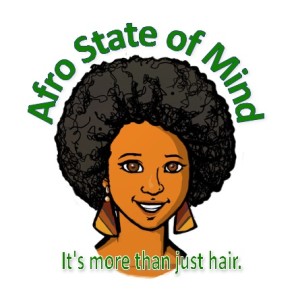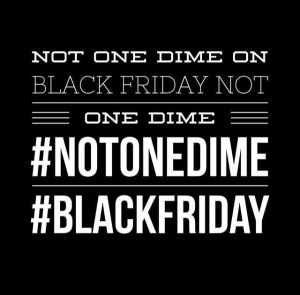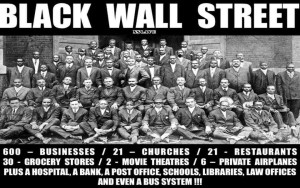There’s Financial Health…Then There’s What We Have…
When Louis Farrakhan issued the call for Justice or Else! A lot of folks got stuck on the “else” part. Many of us couldn’t imagine what our community actually could do if we don’t get justice from White America. Most people failed to realize that the “or else” is up to us.
I see this most clearly when I think about our community’s financial…ahem…”health.”
Financially healthy communities have what some call a high internal money bounce rate. The internal money bounce rate is the number of times that money moves (i.e. “bounces”) between members of the same community, before it leaves that community and ends up in another community’s hands. The more times a dollar can bounce within one community before being spent with outsiders, the more financially empowered that community tends to be.
On the other hand, communities with low (or negative) internal money bounce rates are typically the least empowered.
Communities with high internal bounce rates can use their money (i.e. “buying power”) to determine the direction their community should take. If crime is a problem then these communities can train and hire their own security teams. They could even arm their security if they wanted. They don’t call racist cops from other communities to deal with their internal security issues–especially when the cops have a history of making things worse. When they need access to money to start businesses, they use their economic power to create the banks they need based on financial systems that make sense to them. They don’t use banks with a history of giving racist/bad loans to their community. Their schools are designed to meet the specific cultural needs of that community’s students and are not designed to meet the needs of the students who are expected to rule over that community. The businesses are owned and controlled by the members of the community that they service, not by outsiders with a lengthy history of stealing from the community.
Story Time: Red People Money
Ideally, a community money bounce works something like this:
Ms. Red-Employee works for Mr. Red-Store-Owner. Red-Store-Owner’s clientele is mainly comprised of Red-Customers. (Bounce One.) With the money Red-Store-Owner earns from his store, he funds Ms. Red-Employee’s paycheck. (Bounce Two.) Red-Employee rents an apartment in a building owned by Mrs. Red-Landlord and uses her paycheck to cover the cost. (Bounce Three.)
Mrs. Red-Landlord needs to fix the pipes in the building so she calls Red-Plumbing-Company. (Bounce Four.) The Red-Plumbing workers need to get some extra parts for the job so they stopped by Red-Hardware-Store to get the supplies. (Bounce Five.) Red-Hardware-Store owner needed groceries so she stopped by Red-Grocery-Store. (Bounce six.) The owner of Red-Grocery-Store wasn’t feeling well so she called Dr. Red’s office to squeezed in for a quick check up. (Bounce Seven.)
Dr. Red was happy for the extra work and after his last appointment, he drove to Red-Bank to deposit his earnings. (Bounce Eight.) He’d had an account with Red-Bank for a while and was ready to apply for a loan. Red-Bankers—who helped Dr. Red get his loan application together—called Red-Credit-Reporting-Agency to pull Dr. Red’s credit report. (Bounce Nine.) Ordinarily the company would have flagged Dr. Red’s account because of some late payments on his credit history…but Dr. Red was…well…Red. So they overlooked the blemishes and approved the loan. (Bounce Ten.) Dr. Red was finally able to expand his medical practice and hire some staff.
Dr. Red emailed Red-College-Representatives to advertise his openings. Bright eyed Red-College-Students turned in applications and two of them were hired on the spot. (Bounce Eleven.)
See how that works? That’s a community with a high internal money bounce rate. When a Red community member had a need, they could meet it by paying someone in their own community. By circulating the money among themselves the Red’s could literally shape the type of community they want to live in.
But what happens when Green-Employee tries to navigate the same economy? Green’s side of town was nothing like Red’s.
Her people came from a long line of devastating circumstances…
Story Time: Green People Money
Green-Employee also worked for Red-Store-Owner. She didn’t know it but she earned half of what Red-Employee earned, even though they did the same work. (Negative Bounce One.) She wanted to work her own community but Green People didn’t really own a lot of stores or businesses. Most of the Greens who went to college were really smart…but they usually ended up working for Red-Owned companies. (Negative Bounce Two). When Green got paid she needed to pay rent but worried she didn’t have enough. Her building was owned by Mrs. Red-Landlord. Reds were quick to give other Red-People extra time to pay, but everyone knew Greens couldn’t get away with that. So Green borrowed some money from her dad to make the rent. (Negative Bounce Three.)
Green’s car was acting up and when she searched for mechanics, page after page of Red-Car-Mechanics showed up. When she got to the auto shop, she could tell Mr. Red-Mechanic didn’t really want to serve her. He was incredibly rude—until other Red Customers came in. She paid for the repairs despite the negative feelings she had about the transaction. (Negative Bounce Four.)
Green needed clothes for her kids and since there weren’t any Green-Kids-Clothing stores in her neighborhood, she went to the nearest Red-Kids-Store instead. Every time Green entered the store she felt like the Red-Store-Clerks were following her; Reds believed that Greens were more likely to steal. Green begrudgingly paid for the clothes and headed to her mom’s house. (Negative Bounce Five.)
Green’s mom needed help getting to the doctor’s office. Green wished her mom had a different doctor because the one she had, Dr. Red, frequently talked down to her. Unfortunately most of the Green doctors were trained at Red-Medical-Schools and ended up working in Red-Hospitals. Few of them had offices in Green-Communities like Dr. Red’s. As Green’s mom paid for the services, Green was glad the doctor’s office was near her home but wondered how good the service could be considering Dr. Red’s anti-Green sentiments. (Negative Bounce Six.)
Green had an entrepreneurial spirit and wanted to open her own business. Like Dr. Red, she needed a bank loan. On days like this she longed for a Green-Bank. But her community didn’t have any of those either so Green got mentally and financially prepared to apply for a loan at Red-Bank.
Red-Bankers did not give Green People good loans. But Green was certain that she had done everything she needed to apply properly. Sadly, unlike Dr. Red, Green didn’t benefit from bankers helping her apply for the loan. So she had to get her finances together on her own.
When Green got to the bank, Red-Banker called Red-Credit-Reporting-Agency again. Now Red-Credit overlooked Dr. Red’s past mistakes, but Green did not get the same benefit. Red-Credit believed in fairness but “everyone knows” that Greens don’t pay their loans (no one knew who “everyone” was but all the Red’s believed it). Green was denied the money and was not able to open up her business. (Negative Bounce Seven.)
Which was sad because Green would’ve made a great boss and wanted to hire Green-College students. Most Green-College students had a really hard time getting interviews because most of the companies were owned by Red people. But like many who tried and failed before her, Green eventually gave up hope. She kept working at Red-Store and continued generating money that benefited the Red Community. Her stunted potential was never maximized in a way that could benefit her or her community.
But one day, Green attended a Green-Community march called Justice or Else! She, and other Greens, heard a call to action at that march and while they didn’t understand the whole message—something about it rang true.
In Part 2 of this story we’ll see just how the message behind Justice or Else! could help folks like the Green community become a thriving place of self-sufficiency.
But in the meantime, in case you missed it, many (not all) of the issues in the Black community stem in part from the lack of ownership of our financial resources. That lack of ownership is rooted in slavery but it is now also fueled by internalized White Supremacy which causes many Black people to believe the White man’s ice is colder.
Not one Red-Person cared enough about Green-People to do much to help them open their own stores, schools, banks or medical offices. Because Red people were profiting from the Green community’s dis-empowerment. So long as this is the Green-Community’s financial paradigm, they should expect to stay dis-empowered. They should also realize that no one else is coming to save their community from those issues.
If you’re interested in seeing how that Justice or Else! Call to action worked out for Green and her people, stick around. We’ll pick up the story in the next post.
*******
Looking for more thoughts from an Afro State of Mind? Check out my book Afro State of Mind: Memories of a Nappy Headed Black Girl now available on Amazon.com in paper back or available here for e-book download! And if you want to stay connected follow me on Twitter, or Instagram “like” Afro State of Mind on Facebook or catch up on my latest Youtube videos!










Speak Your Mind